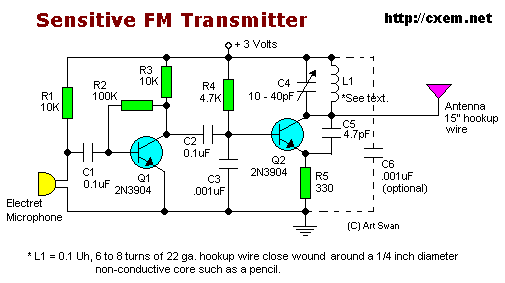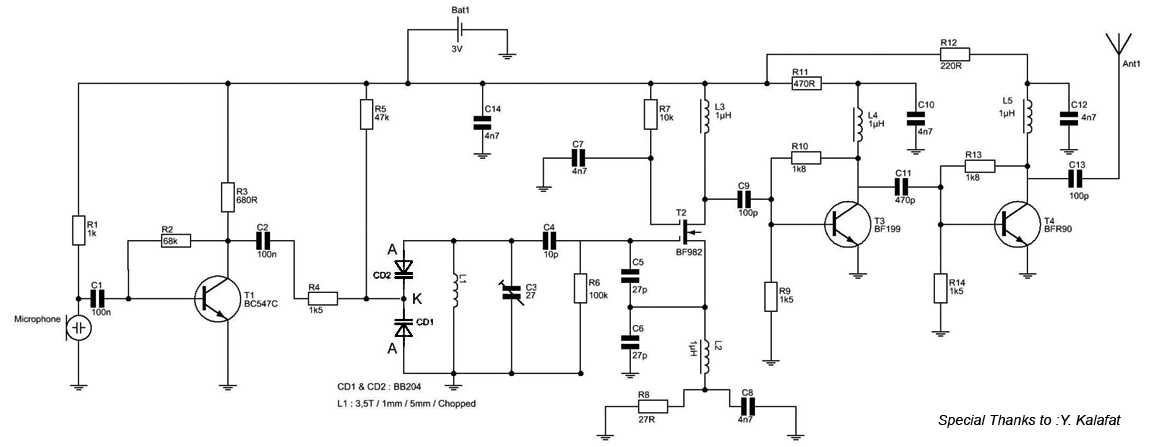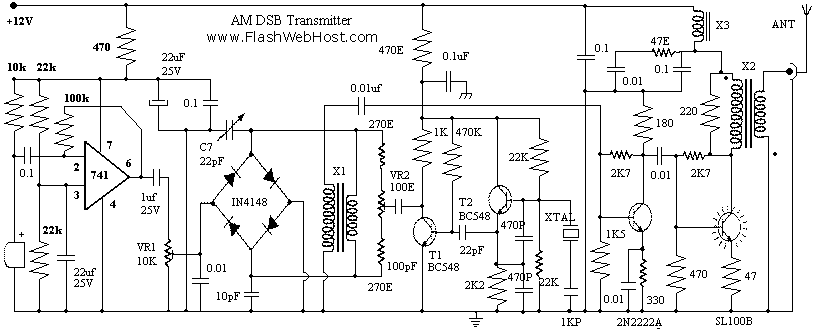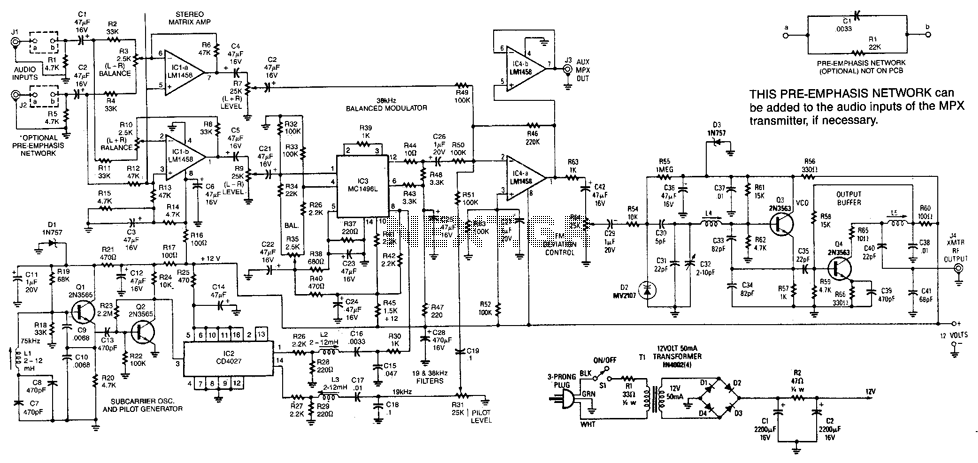
Sensitive FM Transmitter

Sensitive FM Transmitter. Additional Notes: The default for the capacitors type is ceramic, preferably the NPO 1% type or equivalent. However, nothing critical is here; any type can be used.
The sensitive FM transmitter circuit is designed to operate in the frequency modulation range, typically used for audio transmission. The core components of this transmitter include an oscillator, modulator, and an RF amplifier.
The oscillator is responsible for generating a carrier frequency, which is modulated by the audio signal input. In this design, a crystal oscillator or a Colpitts oscillator can be employed to ensure frequency stability. The frequency of oscillation can be adjusted by varying the capacitance in the LC tank circuit, which is formed by an inductor and capacitors.
Capacitors play a vital role in tuning and stability. The recommended capacitors are ceramic, particularly the NPO type, which offers low drift and high stability over temperature changes. Using capacitors with a tolerance of 1% ensures that the frequency remains stable, although the circuit can function with other types of capacitors if necessary.
The modulator section combines the audio input signal with the carrier frequency. This can be achieved through a simple transistor-based circuit, where the base of the transistor receives the audio signal, causing variations in the collector current that modulate the RF signal.
An RF amplifier then boosts the modulated signal to a suitable level for transmission. This stage typically uses a class C amplifier configuration for higher efficiency. An appropriate antenna is connected at the output to radiate the signal effectively.
Power supply considerations are also crucial. The circuit may require a regulated DC supply to ensure consistent operation, with bypass capacitors placed close to the power pins of the active components to filter out noise.
Overall, the sensitive FM transmitter circuit is a versatile design that can be adapted for various applications, including hobbyist projects and educational demonstrations. Proper layout and component selection will enhance performance and reliability in practical implementations.Sensitive FM Transmitter. Additional Notes The default for the capacitors type is ceramic, preferably the npo 1% type or equivalent. But basically nothing critical here. Use any. 🔗 External reference
The sensitive FM transmitter circuit is designed to operate in the frequency modulation range, typically used for audio transmission. The core components of this transmitter include an oscillator, modulator, and an RF amplifier.
The oscillator is responsible for generating a carrier frequency, which is modulated by the audio signal input. In this design, a crystal oscillator or a Colpitts oscillator can be employed to ensure frequency stability. The frequency of oscillation can be adjusted by varying the capacitance in the LC tank circuit, which is formed by an inductor and capacitors.
Capacitors play a vital role in tuning and stability. The recommended capacitors are ceramic, particularly the NPO type, which offers low drift and high stability over temperature changes. Using capacitors with a tolerance of 1% ensures that the frequency remains stable, although the circuit can function with other types of capacitors if necessary.
The modulator section combines the audio input signal with the carrier frequency. This can be achieved through a simple transistor-based circuit, where the base of the transistor receives the audio signal, causing variations in the collector current that modulate the RF signal.
An RF amplifier then boosts the modulated signal to a suitable level for transmission. This stage typically uses a class C amplifier configuration for higher efficiency. An appropriate antenna is connected at the output to radiate the signal effectively.
Power supply considerations are also crucial. The circuit may require a regulated DC supply to ensure consistent operation, with bypass capacitors placed close to the power pins of the active components to filter out noise.
Overall, the sensitive FM transmitter circuit is a versatile design that can be adapted for various applications, including hobbyist projects and educational demonstrations. Proper layout and component selection will enhance performance and reliability in practical implementations.Sensitive FM Transmitter. Additional Notes The default for the capacitors type is ceramic, preferably the npo 1% type or equivalent. But basically nothing critical here. Use any. 🔗 External reference





